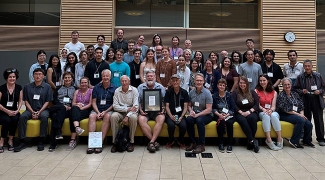Earl W. Davie Symposium 2023: Seventeen years of connecting through science sharing
Wednesday, February 21, 2024 Dr. Travis Sztainert
Our partnership with the Centre for Blood Research (CBR) at the University of British Columbia (UBC) is helping to train the next generation of researchers in transfusion science. This blog post highlights just some of the achievements in education, training or knowledge mobilization accomplished by CBR trainees.
This is a repost of a blog written by CBR students Iryna Liubchak and Julliet Zama, and edited by Marie-Soleil Smith, It originally appeared on the Centre for Blood Research blog in January 2024.
On November 16th, 2023, the Centre for Blood Research (CBR) held their 17th annual Earl W. Davie Symposium, a research event that brings together scientists, medical doctors, healthcare professionals, and trainees in the field of blood research and beyond. The symposium was held at UBC Robson Square, on the traditional territory of the Musqueam, Squamish, and Tsleil-Waututh people.
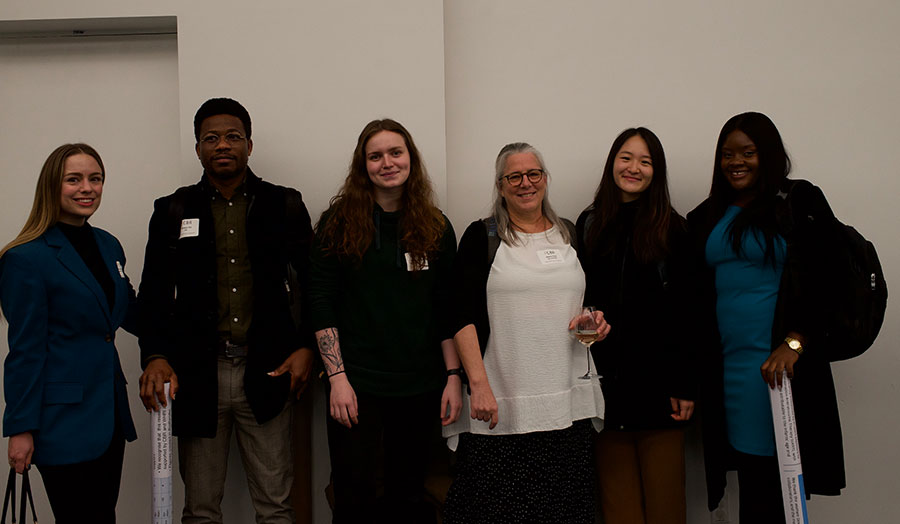
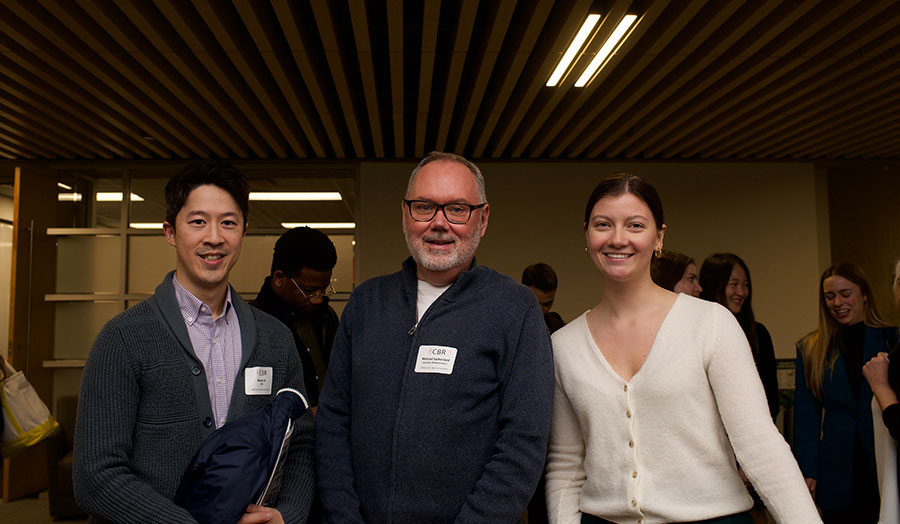
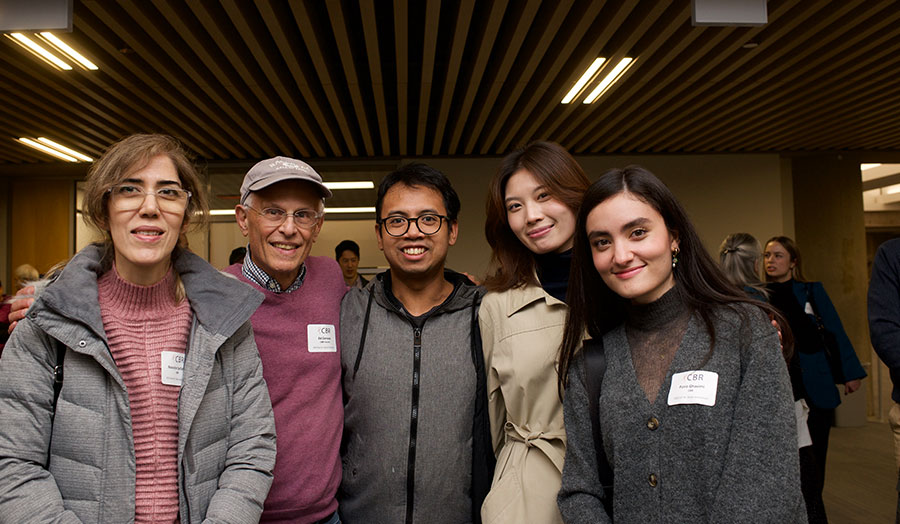
How the Day Kicked Off
The full-day program featured expert talks on hemostasis, thrombosis, and bleeding disorders. Impressive presentations from students and more than 30 trainee research posters were also highlighted throughout the day. Following the opening remarks from CBR Director Dr. Ed Conway, the symposium began with a talk from Dr. Jeffrey Zwicker, Chief of Hematology Service at Memorial Sloan Kettering Cancer Center in New York City. Dr. Zwicker has dedicated his research to predicting thrombosis in cancer patients and reported an association between the low levels of CD200R1 expression in neoplasmatic cells and the high risk of thrombosis. This was followed by a series of presentations on the topic of bleeding disorders.

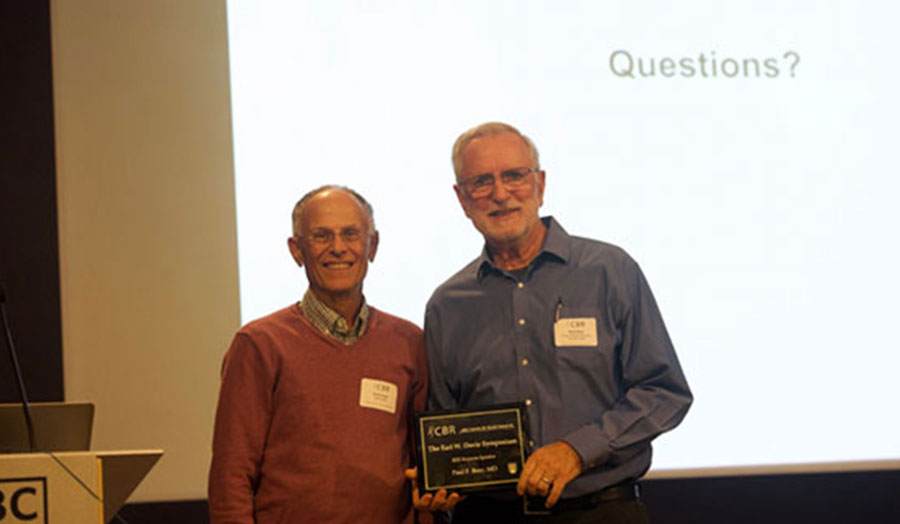
Keynote Speakers
Every year, the CBR invites two keynote speakers to the symposium. These speakers typically come from outside Vancouver to share their research. This year, the CBR brought Dr. Alisa S. Wolberg from the University of North Carolina, Chapel Hill and Dr. Paul F. Bray from the University of Utah.
The first keynote speaker of the symposium was Dr. Wolberg, who presented a talk on the role of fibrinogen and factor XIII in venous thrombosis. Dr. Wolberg’s lab discovered that factor XIII mediates red blood cell (RBC) presence in the blood clot by increasing the stiffness of individual fibrin fibers in the clot and thus creating a fibrin net that retains RBCs. Currently, they are working on evaluating the potential of synthetic tridegin variants – a highly specific factor XIII inhibitors – to release RBC from the blood clot and thus, reduce the blood flow occlusion by the clot.
Dr. Bray was our second keynote speaker of the day. He presented on the topic of “Racial Disparities and Stroke Pharmacogenetics: The Platelet-Neutrophil affair”. In one of his papers titled platelet PAR4 reactivity by rs773902 genotype involving white and black individuals, his goal was to identify platelet genes that contribute to stroke pathogenesis and risk. He discovered that platelet aggregation had no effect of race but PAR4 did show some reactivity after genetic analysis. This led to his conclusion that higher incidence and worse outcomes of strokes were in blacks. His group also focuses on platelet, bleeding, and thrombosis disorders.
Science Sharing & Experiences
While a majority of presentations were centered around scientific contributions, we were also fortunate to hear speakers share their personal experiences with blood disorders. These stories are vital to researchers; listening to personal experiences helps us understand their struggles and lead us to develop services that can truly be shaped for them.
One such speaker was Rick Waines, a member of the Canadian hemophilia blood society, who shared his journey with hemophilia A. Hemophilia A is an inherited bleeding disorder in which the blood does not clot properly due to a deficiency in factor VIII. This can lead to severe bleeding in the joints, muscles, and vital organs, resulting in significant morbidity and mortality. Rick discussed the different treatments he has used over the years and shared his various challenges, including acquiring HCV and HIV through contaminated blood products. He also offered insights into why he declined an opportunity to take part in a clinical trial for gene therapy. Thankfully, due to advocacy through the hemophilia society, Rick now has access to a once weekly sub-cutaneous monoclonal antibody injection, which was further discussed later in the day by Dr. Angelina Marinkovic, to treat his hemophilia that has greatly reduced his treatment burden.
The symposium was a great opportunity to observe how science moves from the benchtop to bedside. A great example of this was the lecture by Dr. Michael Holinstat from the University of Michigan. Anti-platelet therapy used for decreasing the risk of thrombosis often comes with an increased risk of bleeding, thus there is a need to find new drug targets within the cascade of platelet function regulation. Dr. Holinstat’s group and collaborators identified 12-lipoxygenase (12-LOX), an enzyme primarily expressed in platelets that facilitates their activation, as a potential candidate. After four years of screening more than 553,000 different compounds for a highly selective inhibitor of the 12-LOX, they found one with promise.ML355 demonstrated an ability to inhibit thrombosis in laboratory mice without significant side effects on hemostasis. Currently, ML355 is in the phase II clinical trials for the treatment of heparin-induced thrombocytopenia and thrombosis (HITT).
Naiman-Vickar Professorship Highlight
One of the symposium highlights was the Naiman-Vickars Professorship awardee Dr. Elisabeth Battinelli, an expert in platelet biology from Harvard University. Dr. Battinelli and her team explored the role of platelets in cancer and malignancy. Their research revealed that platelets, when incubated with tumor cells, release CCL5 and subsequently activate the IL-8 pathway in breast cancer cells through the upregulation of the CCR5 receptor. Further experiments were conducted using aspirin as an anti-platelet agent, which successfully reduced CCL5 release and prevented IL-8 production in tumor cells. Additionally, Dr. Battinelli’s team showed that platelets can upregulate PD-L1, a transmembrane protein that can be highly expressed on tumour cells, which can prevent T-cell attack. Of note, when they incubated tumour cells with platelets that were pre-treated with aspirin, there was no upregulation of PD-L1. Despite their findings, the use of aspirin in the context of cancer is under debate given the recent evidence that aspirin is associated with a higher mortality rate from cancer.
Incredible Poster Presentations
This year, we had a record-high 34 posters presented by trainees, postdoctoral fellows, clinical fellows, and research associates. Many of these posters came from members within the CBR, but there were several poster presenters from out of town who came to share their research! The Best Poster Presentation went to Stephanie Besoiu, a PhD Student in the Jefferies Lab, for her poster on Novel MHC Class l Antigen Cross Priming Ability of Type 2 Innate Lymphoid cells. To end the day, we had the pleasure of listening to five outstanding trainees from Canadian and US institutions who presented their oral talks. After the formal program, a reception was held where everyone got to connect and network with attendees and speakers.
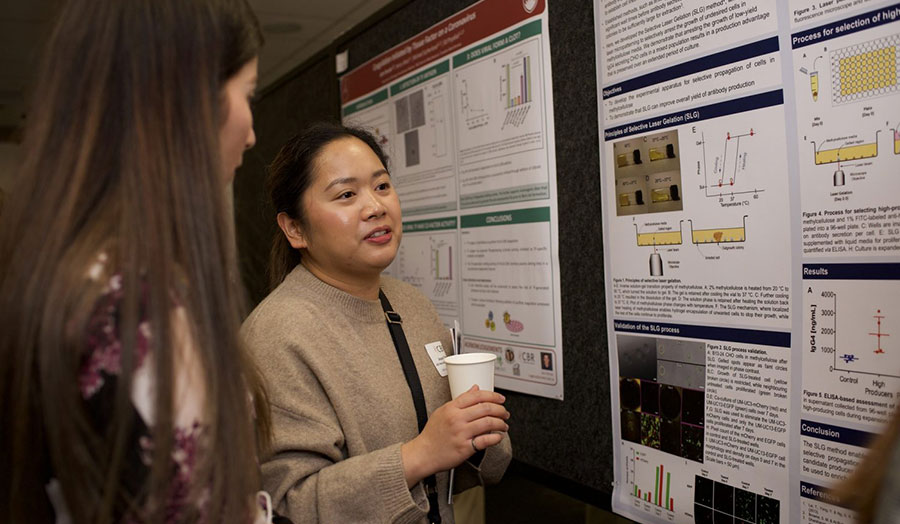
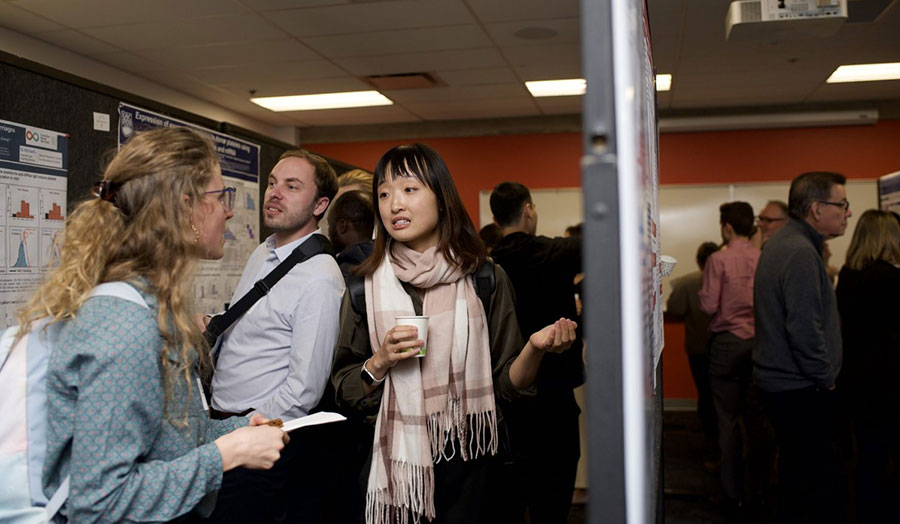
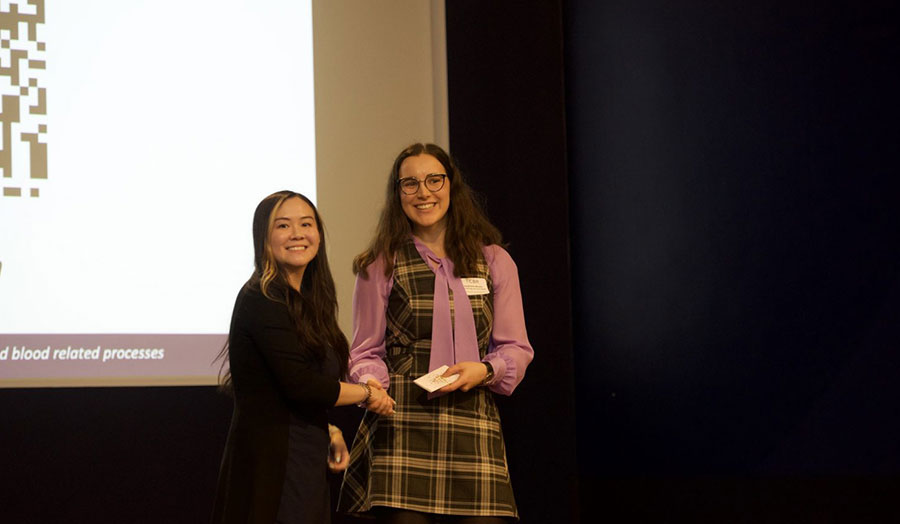
The 2023 Earl W. Davie Symposium program, recordings, poster gallery and photos can be found here.
The Centre for Blood Research would like to thank their event sponsors, without whom the 17th Annual Earl W. Davie Symposium would not have been possible: the Naiman-Vickars Endowment Fund, Bayer, the Canadian Blood Services, novo nordisk, GRIFOLS, CSL Behring, ALEXION, Recordati Rare Diseases, Pfizer and Stago.
Canadian Blood Services – Driving world-class innovation
Through discovery, development and applied research, Canadian Blood Services drives world-class innovation in blood transfusion, cellular therapy and transplantation—bringing clarity and insight to an increasingly complex healthcare future. Our dedicated research team and extended network of partners engage in exploratory and applied research to create new knowledge, inform and enhance best practices, contribute to the development of new services and technologies, and build capacity through training and collaboration. Find out more about our research impact.
The opinions reflected in this post are those of the author and do not necessarily reflect the opinions of Canadian Blood Services nor do they reflect the views of Health Canada or any other funding agency.
Related blog posts
Read about the new Canadian Blood Services Dana Devine Award program. This blog post, written by the Centre for Blood Research (CBR) includes reflections from individuals who worked with Dr. Devine.
Read about the annual Research Day event held at the Centre for Blood Research (CBR) in this blog post written by CBR summer student alumni.
The Centre for Blood Research (CBR) at the University of British Columbia celebrated its 20-year anniversary on July 7th by inviting CBR alumni to join current members in learning about the beginnings of the centre. Read about the celebration and the history of the centre in this blog reposted from CBR.


